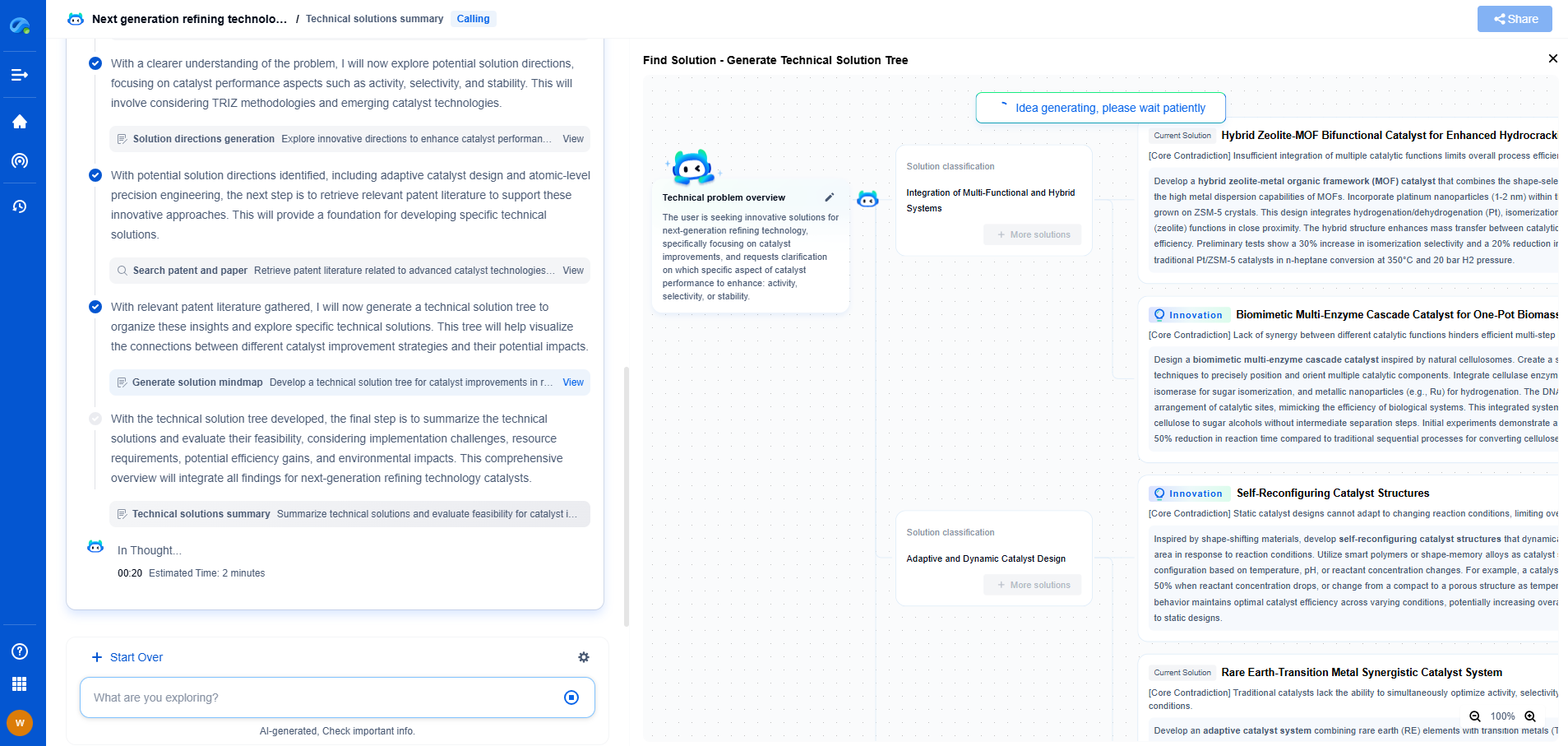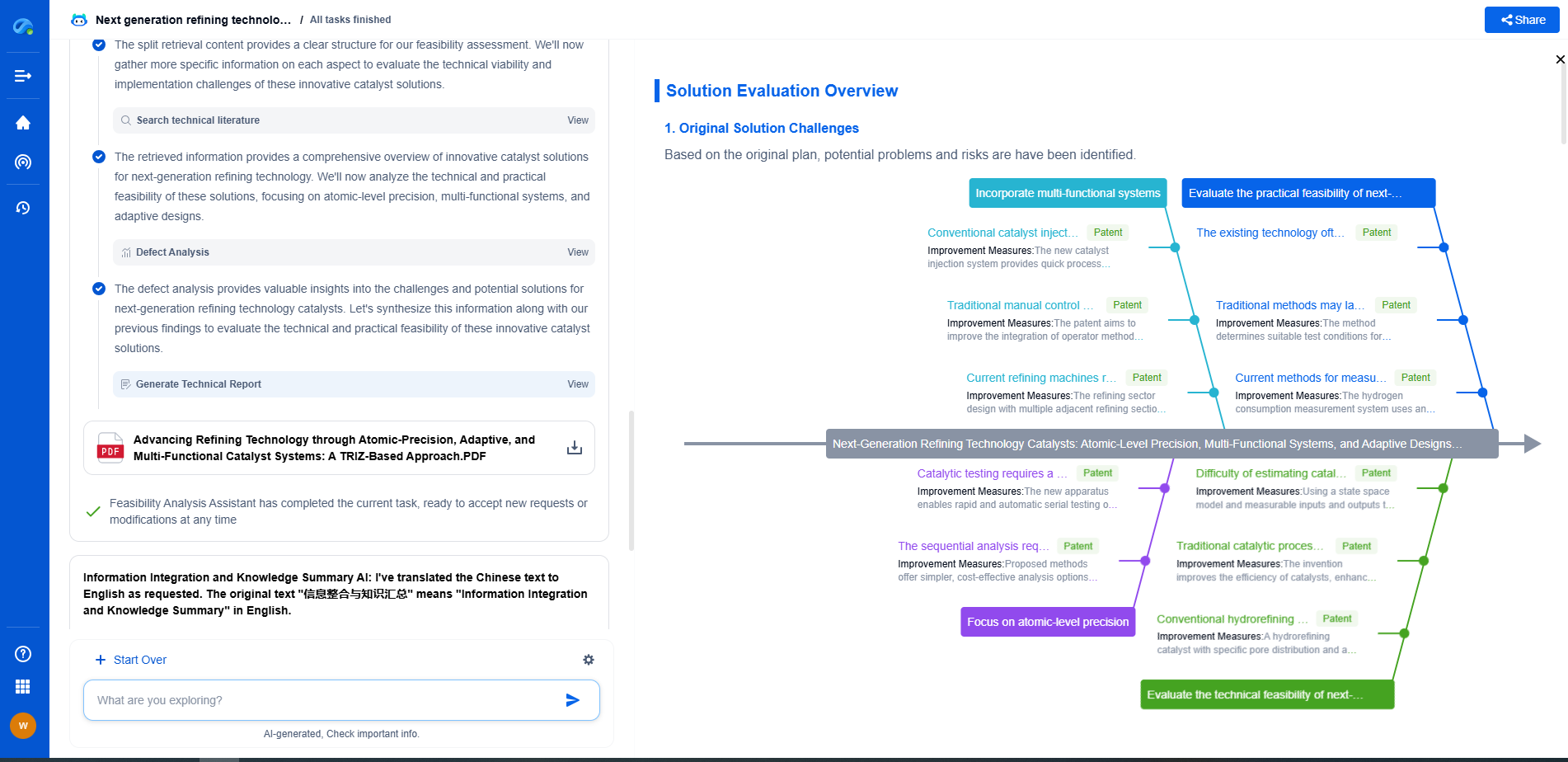NEA1 vs NEA2 vs NEA3: Comparing 5G Encryption Standards
JUL 7, 2025 |
As the world rapidly embraces the new wave of 5G technology, ensuring robust security measures has become increasingly essential. Among these measures are encryption standards designed to protect data integrity and privacy. The 5G encryption landscape is primarily dominated by three standards: NEA1, NEA2, and NEA3. Each of these standards plays a crucial role in safeguarding communications, but they differ in terms of strengths, functionalities, and applications. This article explores these encryption standards, providing a detailed comparison to help understand their distinct features and implications for 5G networks.
Understanding NEA1
NEA1, or 128-EEA1 (EPS Encryption Algorithm 1), is based on the Snow 3G stream cipher. Originally developed for 3G networks, Snow 3G has been adapted for use in the 5G environment. NEA1 is known for its efficiency in terms of computational requirements, making it a suitable choice for devices with limited processing capabilities. Its design focuses on achieving an optimal balance between security and performance, providing adequate protection without taxing system resources excessively.
One of the notable strengths of NEA1 is its moderate level of security, which is sufficient for most consumer-grade applications. However, its dependency on older cryptographic principles means it might not offer the same level of security as more modern algorithms. As a result, while NEA1 remains widely used, especially in less sensitive applications, it is often complemented by other, more robust algorithms in scenarios demanding higher security levels.
Exploring NEA2
NEA2, or 128-EEA2, utilizes the Advanced Encryption Standard (AES) in counter mode. AES is a globally recognized cryptographic standard known for its robust security and versatility. By employing AES, NEA2 provides a significantly higher level of security compared to NEA1, making it suitable for more security-conscious applications.
The primary advantage of NEA2 is its high level of encryption strength, which makes it well-suited for environments where data sensitivity is a paramount concern. The use of AES ensures that NEA2 benefits from continuous updates and improvements in cryptographic research, maintaining its relevance in the face of evolving security threats. However, the trade-off comes in the form of increased computational demand, which may impact performance on less powerful devices.
Analyzing NEA3
NEA3, or 128-EEA3, is based on the ZUC stream cipher, which is part of a suite of algorithms developed specifically for 4G and 5G networks. ZUC was designed with a focus on high throughput and low latency, aligning well with the demands of modern mobile networks. NEA3 offers a balanced approach, combining adequate security with performance efficiency.
One of the key characteristics of NEA3 is its adaptability in handling high-speed data streams without compromising on security. This makes it an ideal choice for applications requiring rapid data processing and transmission, such as real-time video streaming or online gaming. While not as widely adopted as NEA2, NEA3 is gaining traction due to its specialized capabilities that align closely with 5G network requirements.
Comparative Analysis
When comparing NEA1, NEA2, and NEA3, several factors need to be considered, including security strength, computational efficiency, and application suitability. NEA1, with its moderate security and low computational demand, is suitable for basic applications where performance is prioritized over high-level security. NEA2, with its AES-based encryption, offers superior security and is optimal for scenarios where data protection is critical, albeit at the cost of higher computational load. NEA3 strikes a balance between security and performance, making it well-suited for high-throughput applications characteristic of 5G networks.
Choosing the Right Encryption Standard
Selecting the appropriate encryption standard depends largely on the specific requirements of the application in question. For devices with limited processing capacity or applications where speed is essential, NEA1 or NEA3 could be more suitable. Conversely, for applications where data security is paramount, NEA2 provides a more robust protective measure. It's crucial for organizations and developers to assess their security needs, performance requirements, and resource availability before implementing a specific encryption standard.
Conclusion
The advent of 5G technology brings with it a new set of challenges and opportunities in the realm of data security. Understanding the strengths and limitations of NEA1, NEA2, and NEA3 is vital for making informed decisions about encryption strategies in 5G deployments. By carefully evaluating the needs of a given application, stakeholders can choose the encryption standard that best aligns with their security and performance objectives, ensuring that their 5G networks remain both secure and efficient.
Empower Your Wireless Innovation with Patsnap Eureka
From 5G NR slicing to AI-driven RRM, today’s wireless communication networks are defined by unprecedented complexity and innovation velocity. Whether you’re optimizing handover reliability in ultra-dense networks, exploring mmWave propagation challenges, or analyzing patents for O-RAN interfaces, speed and precision in your R&D and IP workflows are more critical than ever.
Patsnap Eureka, our intelligent AI assistant built for R&D professionals in high-tech sectors, empowers you with real-time expert-level analysis, technology roadmap exploration, and strategic mapping of core patents—all within a seamless, user-friendly interface.
Whether you work in network architecture, protocol design, antenna systems, or spectrum engineering, Patsnap Eureka brings you the intelligence to make faster decisions, uncover novel ideas, and protect what’s next.
🚀 Try Patsnap Eureka today and see how it accelerates wireless communication R&D—one intelligent insight at a time.
- R&D
- Intellectual Property
- Life Sciences
- Materials
- Tech Scout
- Unparalleled Data Quality
- Higher Quality Content
- 60% Fewer Hallucinations
Browse by: Latest US Patents, China's latest patents, Technical Efficacy Thesaurus, Application Domain, Technology Topic, Popular Technical Reports.
© 2025 PatSnap. All rights reserved.Legal|Privacy policy|Modern Slavery Act Transparency Statement|Sitemap|About US| Contact US: help@patsnap.com

